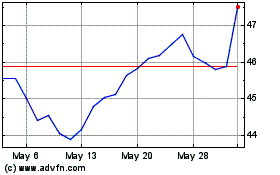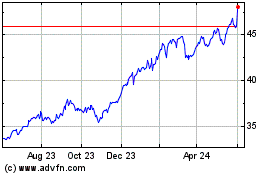Over the past year, the Indian stock markets have been posting
phenomenally high returns. This can be mainly attributed to the
recent investor friendly reforms and proactive steps taken by
Government to stabilize the fast deteriorating investment climate
in the Indian economy.
The measures taken by the Government to allow direct investments
in the retail industry has been severely criticized but finally saw
the green light when it received majority support from political
parties thereby eliminating any doubt relating to implementation of
the proposed plan.
This surely is a welcome step by the government as it is
expected to boost funds inflow in the economy, especially
considering that similar steps have been taken to boost investments
in the economy’s debt plagued air and broadcast industries as well
(see India ETFs: Getting Back On Track?).
Also, for an emerging economy like India, foreign portfolio
flows are major movers of the equity markets. Therefore the policy
inactions thus far from the Government to tame the mounting debt
level have long chased foreign institutional investors away from
the Indian capital markets. As a result the Indian equity markets
underperformed severely in 2011.
Adding to the volatility of the Indian markets is the twin
fiscal and trade deficits which have, for quite some time, blurred
the growth outlook for the Indian economy. It also faces
significant headwinds from rating agencies like Standard and Poor’s
and Moody’s which have warned that if the economy does not keep a
check on the mounting debt levels, it could soon lose its
investment grade status.
Presently, the economy sports a ‘BBB’ rating from Standard and
Poor’s with a negative outlook, which is just one notch above the
junk grade level (see France's Credit Downgrade: How Does it Impact
the French ETF?).
However, recent policy measures have paved the way for a remedy.
Also, the above par corporate earnings reported in the latest
quarter and favorable forward guidance by the management of various
companies is a sure indicator of rising business spending and
demand restoration in the economy.
These factors have led to the S&P CNX Nifty
— a popular benchmark of Indian stocks measuring the performance of
the 50 biggest companies in the economy, to go up by about 20% in
2012 (see Time to Buy the India Infrastructure ETF).
For investors expecting this trend to continue, a play could be
made on any of the popular Indian ETFs that are currently in the
U.S. market. We have highlighted some of our favorites below for
those who are looking for a continued surge in the Indian stock
market in the near to medium term:
WisdomTree India Earnings ETF
(EPI) is a Zacks # 2 or
‘Buy’ ranked ETF which tracks the WisdomTree India Earnings Index.
It tracks the performance of roughly 196 securities which implies
it has exposure in the mid and small cap space as well.
The ETF allocates around 40% of its total assets in the top 10
holdings. EPI charges 83 basis points as expense ratio and has an
asset base of $1.21 billion. It has a strong average daily volume
of about 3 million shares and it has returned 18% in 2012.
iPath MSCI India Index ETN
(INP) is a Zacks # 2 or
‘Buy’ ranked ETN. At 89 basis points the expense ratio for the ETF
stands pretty high. It has an asset base of $466 million and does
volume of 78,000 shares daily. INP has returned around 18% in 2012
(see the Zacks ETF Center).
PowerShares India ETF
(PIN) is a Zacks # 3 or
‘Hold’ ranked ETF which tracks the Indus India Index. Unlike EPI
which spreads out its portfolio across a variety of stocks across
different levels of market capitalization, PIN actually tries to
replicate Indian equities through a sampling approach of 50 stocks
which are predominantly large cap.
It has an asset base of $387 million and an average daily volume
of around 738,000 shares. PIN has returned around 22% YTD in
2012.
iShares S&P India Nifty 50 ETF
(INDY) is a Zacks # 2 or
‘Buy’ ranked ETF which tracks the S&P CNX Nifty Index which is
a benchmark index for measuring the performance of Indian equities.
It tracks the performance of the 50 largest companies from India
based on their market capitalization.
Despite the focus on large caps though, the fund is one the
pricey end charging investors 92 basis points a year in fees. The
ETF has an asset base of $354 million and does a daily volume of
145,000 shares. INDY has returned around 20% during 2012.
Investors seeking a small cap exposure to Indian equities can
consider the Market Vectors India Small Cap ETF
(SCIF). It has a Zacks
Rank of 3 or ‘Hold’ and tracks the Market Vectors India Small Cap
Index which follows the performance of small cap stocks in India.
It has an expense ratio of 0.85% and pays out a yield of 1.45%.
Being a relatively new fund it has been able to amass a modest
asset base of around $86 million, however, it has a strong average
daily volume of 87,000 shares. Not surprisingly, this small cap ETF
has outperformed its large cap peers in this uptrend returning
around 20% in 2012.
Investors seeking exposure in the Indian ETFs must note that
these ETFs are highly correlated to each other. The following
correlation matrix summarizes their strong correlation among each
other.
Table1: Correlation Matrix
|
ETF
|
EPI
|
INP
|
PIN
|
INDY
|
SCIF
|
|
EPI
|
100%
|
96.62%
|
96.74%
|
95.94%
|
91.59%
|
|
INP
|
|
100%
|
96.40%
|
95.41
|
88.13%
|
|
PIN
|
|
|
100%
|
94.98%
|
88.10%
|
|
INDY
|
|
|
|
100%
|
88.00%
|
|
SCIF
|
|
|
|
|
100%
|
Thus we see that these ETFs, especially the large cap ones are
very strongly correlated among each other with a minimum
correlation of around 95%. This is in spite of not tracking same
indexes and varying allocations across various sectors.
Nevertheless, Financials, Energy and Technology seem to be the
favorite sectors of these Indian ETFs as the three sectors account
for a lion’s share of each of these ETFs.
Given their strong correlations it isn’t too surprising that
these ETFs have similar risk-return tradeoffs, and as we have seen
thus far their performances seem to have a strong resemblance in
the positive direction.
Yet, if we go back in time a couple of years we see that this
strong correlation of Indian equity ETFs is not always beneficial
for investors. The following table explains this phenomenon:
Table 2: Yearly Returns Analysis
|
Year
|
EPI
|
INP
|
PIN
|
INDY
|
SCIF
|
|
2012
|
18%
|
18%
|
22%
|
20%
|
20%
|
|
2011
|
-40.24%
|
-40%
|
-36%
|
-36.70%
|
-55.80%
|
|
2010
|
16.19%
|
17.24%
|
13.03%
|
20.57%
|
N.A
|
While it is true that the Indian ETFs have emerged as clear
winners in 2012, the opposite was also true the previous
fiscal.
In 2011, these ETFs had a forgettable run as the space was one
of the worst performing markets after a great performance in 2010
as well. This can also be attributable to a weak currency — The
Indian Rupee had lost significantly within that time frame versus
the U.S. Dollar (see Zacks Top Ranked Currency ETF: ICN).
Such high volatility might not be a great moral booster for
investors and there is no denying the fact that the Indian economy
still has a lot of work to do. However, the inevitable question
that lurks in everybody’s mind as we inch further into 2013 is
“Will history repeat itself and there will be a significant
fall in these ETFs as happened in 2011?” Well the odds
are certainly against it.
After the dismal run in 2011, Indian equities finally
seem to be bottoming out. Also, while the macroeconomic and
political headwinds still hint towards the negative side, the
economy seems to have got a jumpstart on the policy front with the
much needed amendments as of late (see 3 Emerging Market ETFs
Protected from Global Events).
Also, India’s huge domestic market coupled with the persistent
efforts to create an investor friendly climate is sure to attract
foreign funds into the system in the quest for above par growth
potential.
India has earned a Zacks outlook of
‘Outperform’ and we are bullish on Indian equities in
the near to medium term, suggesting any of the above ETFs could be
worth a closer look for investors seeking more international
exposure this year.
Want the latest recommendations from Zacks Investment Research?
Today, you can download 7 Best Stocks for the Next 30
Days. Click to get this free report >>
WISDMTR-IN EARN (EPI): ETF Research Reports
ISHARS-SP INDIA (INDY): ETF Research Reports
IPATH-MS INDIA (INP): ETF Research Reports
PWRSH-INDIA POR (PIN): ETF Research Reports
MKT VEC-INDI SC (SCIF): ETF Research Reports
To read this article on Zacks.com click here.
Zacks Investment Research
Want the latest recommendations from Zacks Investment Research?
Today, you can download 7 Best Stocks for the Next 30 Days. Click
to get this free report
WisdomTree India Earnings (AMEX:EPI)
Historical Stock Chart
From Feb 2025 to Mar 2025

WisdomTree India Earnings (AMEX:EPI)
Historical Stock Chart
From Mar 2024 to Mar 2025
